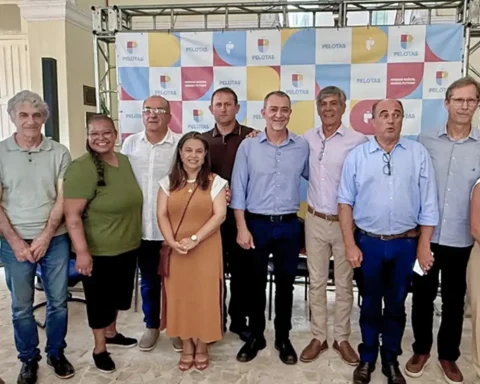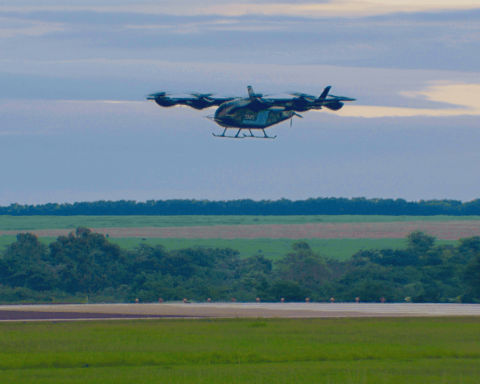Jackfruit trees, beach almond trees, casuarinas, boa constrictors, agaves. They are plants that are part of the Brazilian landscapes, but this was not always the case. These species are not native to Brazil and, brought from other parts of the globe by man, ended up spreading without control across the country.
The National Database of Invasive Exotic Species, maintained by the non-governmental organization Instituto Hórus, lists at least 210 non-native plant species that have spread across Brazilian ecosystems, causing damage to the local flora.
Beach almonds or castanets (Terminalia catappa), for example, are a constant presence on the beaches and shores of Brazilian lakes. Coming from Asia, it probably arrived here unintentionally, through the ballast water of Portuguese vessels.
Being tolerant of strong winds, salinity and a variety of soil types, here it found fertile ground for its expansion, as its seeds can be carried over long distances through sea currents and are dispersed by native fauna. It was even intentionally planted in squares and borders due to the shade provided by its canopy.
Its shadow, however, is precisely what most harms the native plant species, as it prevents the passage of sunlight and hinders the development of seedlings. In the beach environment, for example, many plants only develop in full sun.
Effects
A survey completed in 2021 by biologist Gyrliane Santos dos Santos, at the time a graduate student at the Federal University of Ceará (UFC), showed that the beach almond tree had spread to at least 34 conservation units, in nine Brazilian states, including the Fernando de Noronha National Park.
Like the beach almond tree, the casuarinas (Casuarina equisetifolia) are also a problem for coastal vegetation. Originally from Australia, it probably arrived intentionally, being used for ornamental purposes, hedges and dune stabilization.
A study carried out by a team from the State University of Santa Catarina (Udesc), in 2020, in the restinga of Cabo de Santa Marta, showed that casuarina has an impact on the abundance of native individuals, reducing the vegetation cover in the areas where they are present.
“When they are introduced into an environment different from those in which they naturally occur, they [as espécies exóticas] can adapt. When they adapt, they reproduce and completely modify the natural ecological process of that environment. And when they reproduce with certain success, they become dominant”, explains Massimo Bovini, researcher from the Rio de Janeiro Botanical Garden and the Ilhas do Rio project.
colony grass
The researcher coordinated a project to eradicate crabgrass (megathyrsus maximus) in Cagarras, coastal islands that are part of the landscape of Rio de Janeiro and are home to 190 plant species. It is not known whether the African species arrived here accidentally or intentionally, but today it is one of the most common invasive plants in Brazil.
“I surveyed all the species of flora that occur on the island. But, over the two years that I carried out the survey, one thing bothered me, which was the colonião grass, a very aggressive invasive species”, says the researcher.
The nuisance turned into action and Bovini began, in 2014, the work of eradicating the grass. It took a few years to discover the best way to deal with the species. “It’s very hard work, very difficult, because the grass grows very fast. In a month, he is able to grow ten centimeters. And when it rains and it’s sunny, it grows even faster. It spreads really fast,” she said.
After a few attempts, which included controlled burning, covering the grass with a black tarp, manual extraction and the use of herbicides, his team concluded that the best result was obtained with “nucleation”.
The method includes replanting native seedlings close to each other, creating vegetation cores that, by generating shade, naturally prevent the growth of grass, a species that needs full sun to develop. But even after eight years, the work is still in its infancy. And, without sponsors, the project carried out in the archipelago, which is a federal conservation unit (Natural Monument of the Cagarras Islands), has been at a standstill since July of last year.
Bovini points out that, in many cases, the suppression of native flora, either by fire or deforestation, favors the expansion of invasive plants. “A clearing was opened, the shading was removed, the sun comes directly onto the ground, the invasive species will certainly arrive and they arrive very quickly”.
The Tijuca National Park, also in the city of Rio, is another federal conservation unit that has to deal with invasive species, such as colonial grass, jackfruit (Artocarpus heterophyllus), originally from India, and the dracena (Dracaena fragrans).
Colonial grass is an extra concern for the park because it is susceptible to fire and can serve as a trigger for fires that reach the forest. A survey carried out between 2014 and 2015 showed that the grass occupied 2% of the total area of the park, or 83 thousand square meters. In the Covanca sector, grass occupied almost 13% of the area.
Palm heart
As with animals, not all invasive plants come from other countries. The Hórus Institute database points out that 14 Brazilian species invaded ecosystems where they were not native.
This is the case of the açaí tree (Euterpe oleracea), a palm tree whose fruits extract the famous pulp that is native to the Amazon and was brought for cultivation in the Atlantic Forest. One of the projects involving açaí actually aimed to save its counterpart: the juçara palm (Euterpe edulis), native to the Atlantic Forest.
For producing a heart of palm that is tasty and of high value for gastronomy, the juçara was so exploited that it ended up becoming a threatened species. The reason is that the heart of palm is precisely the part of the plant where new leaves are formed and, if removed, the palm tree dies.
Some researchers then tried to create a viable alternative for exploiting the palm tree, purposely hybridizing it with its Amazonian congener which, unlike the juçara, is a tussock tree, that is, the same individual generates several stems. Thus, it would be possible to remove the palm hearts by sacrificing only some of these stems without completely killing the plant.
The problem is that some of these experiences ended up getting out of hand. In Sete Barras (SP), for example, the açaí tree started to spread through the native forest of the Carlos Botelho State Park.
The park’s Management Plan considered it a “problem species” due to its dispersal capacity and the possibility of natural hybridization with the juçara, which could cause “genetic problems” in the native palm population.
Restrictions
For the founder of Instituto Hórus, Silvia Ziller, it would be important to have control over these species that have invasive potential, imposing, for example, restrictions on their trade.
“Ornamental plants, in common use, had to be banned, as long as they are on the lists of invasive plants. So the flower shops would have to be inspected in order not to produce or sell these plants anymore, which we know are problem plants”, he argued.
According to her, in addition, it is necessary to invest in early detection, that is, as conservation units perceive the emergence of invasive alien species, they are eliminated. “As long as you have control, you can eliminate”.
Plants are more easily dispersed than fauna, as seeds and spores are difficult to contain. However, according to Ziller, its elimination ends up being easier because, unlike animals, plants remain still.
“With a correct approach to control, over time you can make a huge difference in restoring natural elements, removing these species [exóticas invasoras]”.
A Brazil Agency tried to hear from the Ministry of the Environment and the Brazilian Institute of the Environment and Renewable Natural Resources (Ibama) about strategies for dealing with invasive alien species, but did not receive a response.

















